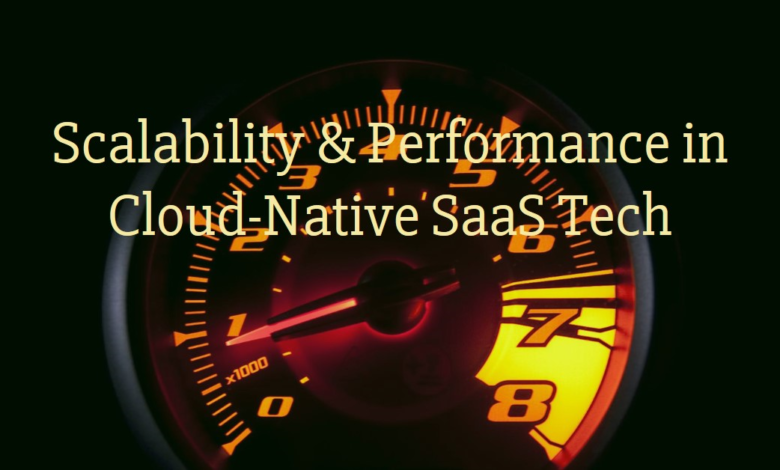Cloud-Native Tech in SaaS: Scalability & Performance

In the ever-evolving landscape of software as a service (SaaS), cloud-native technologies are increasingly becoming a cornerstone of digital transformation strategies. Particularly in 2024, enterprises are leveraging these technologies to improve scalability, enhance performance, and maintain a competitive edge in the market. This article explores the role of digital transformation in promoting cloud-native practices within SaaS applications, illustrating how companies like P99Soft are pivotal in guiding enterprises through this crucial transition.
The Push Towards Cloud-Native Technologies in SaaS
Cloud-native technologies refer to a set of practices that utilize cloud computing to build and run scalable applications in modern, dynamic environments such as public, private, and hybrid clouds. The core attributes of cloud-native technology—containerization, microservices, immutable infrastructure, and declarative APIs—empower organizations to achieve greater agility and faster innovation.
According to a report by Gartner, 85% of organizations will be running containerized applications by 2025, up from 35% in 2020. This shift underscores the growing reliance on cloud-native frameworks to meet the demanding scalability and performance requirements of modern business applications.
Enhancing Scalability Through Microservices
One of the primary advantages of adopting cloud-native technologies in SaaS is scalability. Traditional monolithic architectures can hinder the ability to scale specific functions independently. However, microservices architecture, a staple of cloud-native design, allows separate components of an application to scale independently, thereby improving resource utilization and reducing bottlenecks.
A survey by O’Reilly in 2023 highlighted that companies utilizing microservices experienced a 33% improvement in scalability for their applications. This significant uptick is a testament to the effectiveness of microservices in enhancing the performance and scalability of SaaS platforms.
Boosting Performance with Containers
Containers are another crucial element of cloud-native strategies. They provide a lightweight, consistent environment for applications to run independently from the underlying infrastructure. This isolation ensures that SaaS applications perform consistently across different environments, leading to improved performance and more straightforward management.
Data from the Cloud Native Computing Foundation (CNCF) reveals that the use of Kubernetes, a leading container orchestration platform, has grown by over 50% in enterprises within the last two years alone. This growth is indicative of the critical role containers play in operationalizing cloud-native principles to boost SaaS application performance.
Role of Immutable Infrastructure and Declarative APIs
Immutable infrastructure and declarative APIs further drive the adoption of cloud-native technologies by enhancing the manageability and security of SaaS applications. Immutable infrastructure prevents inconsistencies between development and production environments by ensuring that servers are not modified after deployment. Instead, new changes are made by replacing servers with new ones, built from a common image.
Meanwhile, declarative APIs define the desired state of an application’s infrastructure, leaving the system to handle the implementation automatically. This approach reduces the complexity of operations and helps maintain a consistent state across deployments, thereby improving both performance and reliability.
P99Soft’s Role in Facilitating Digital Transformation
P99Soft is at the forefront of assisting enterprises in their digital transformation journeys, with a particular focus on integrating cloud-native technologies into SaaS applications. The company offers bespoke digital transformation solutions tailored to the needs of the gaming industry, which is increasingly reliant on SaaS platforms for delivering content and engaging users.
Through its expertise in cloud-native technologies, P99Soft enables SaaS providers to achieve scalable, high-performing applications that are crucial for maintaining competitive advantage in the fast-paced digital landscape.
FAQs on Cloud-Native Technologies in SaaS
- What are the main benefits of adopting cloud-native technologies for SaaS?
- Improved scalability, enhanced performance, and increased agility in deployment and operations.
- How do microservices enhance the scalability of SaaS applications?
- Microservices allow individual components of an application to scale independently, improving resource utilization and application performance.
- Why are containers important for SaaS applications?
- Containers provide a consistent environment for applications, improving deployment reliability and operational simplicity across different computing environments.
- What is immutable infrastructure, and why is it beneficial?
- Immutable infrastructure involves replacing servers rather than modifying them, reducing inconsistencies and enhancing the security and stability of deployments.
- How can declarative APIs improve the management of SaaS applications?
- Declarative APIs help maintain the consistency of application environments by automating configurations and ensuring the infrastructure remains in the desired state.
Conclusion
As we advance through 2024, the adoption of cloud-native technologies in SaaS applications is not just a trend but a necessity for enterprises aiming to stay ahead in the digital arena. The scalability, performance, and operational efficiency offered by these technologies make them indispensable in the age of digital transformation. Organizations like P99Soft play a pivotal role in navigating these technological advancements, ensuring that enterprises not only survive but thrive in the evolving digital ecosystem. As businesses continue to transform, one might wonder, what will be the next frontier in cloud technology innovation?
Also know 6 Tips for Making the Most of Technology.


